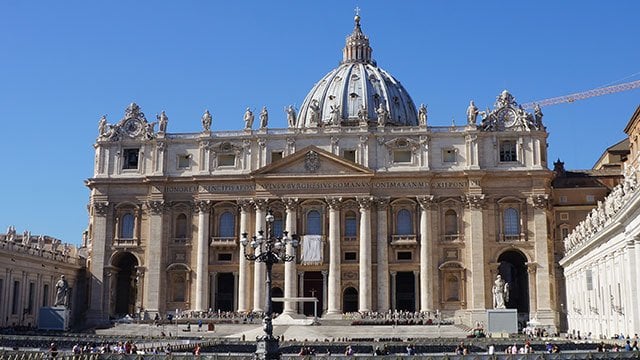Exploring the Medieval Charm of Viterbo
Nestled in the Lazio region of Italy, Viterbo offers a captivating glimpse into the past. As a popular starting point for the Via Francigena, it’s the perfect place to begin walking the last 100km of the Via Francigena from Viterbo to Rome. Boasting one of Italy’s best-preserved medieval centres, this city, with just over 60,000 residents, is rich in history, culture, and architectural wonders.
Whether you’re walking the Via Francigena or simply exploring, Viterbo’s medieval streets and landmarks promise an unforgettable experience. In this guide, we will highlight the top things to do and see, as well as the best times to visit.
Table of contents
- Exploring the Medieval Charm of Viterbo
- The Duality of Viterbo: Historic and Modern
- Step Back in Time: San Pellegrino Medieval Quarter
- The Palazzo dei Papi: A Testament to Papal Power
- Piazza San Lorenzo: The Heart of Viterbo
- Explore Viterbo’s Romanesque Churches
- Renaissance Grandeur: Palazzo dei Priori
- Festivals in Viterbo: A Celebration of History and Culture
- Other Things to Do in Viterbo
- When to Visit Viterbo
The Duality of Viterbo: Historic and Modern
Viterbo is a city of contrasts, divided into two distinct areas. The historic centre, enclosed within medieval walls, is a beautifully preserved reminder of the city’s past. Just outside the walls lies the modern part of Viterbo, with contemporary buildings and bustling streets. This juxtaposition allows visitors to experience the city’s rich history and vibrant present.
However, it’s the medieval centre that truly sets Viterbo apart. Wander through its narrow cobblestone streets, discover quaint squares, and admire stone buildings and arches that transport you back to a bygone era.
Step Back in Time: San Pellegrino Medieval Quarter
The San Pellegrino medieval quarter is at the heart of Viterbo’s historical charm. This picturesque area, tucked inside the city walls, is characterised by its winding lanes, ancient stone buildings, and charming piazzas. As you stroll through the quarter, you’ll find yourself immersed in a time when Viterbo was a bustling medieval hub.
Be sure to explore the enchanting streets, where every corner reveals a hidden gem.
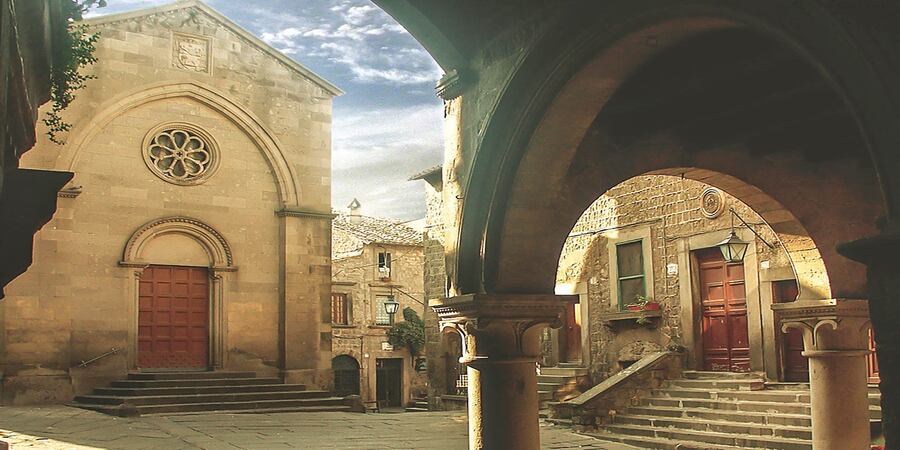
The Palazzo dei Papi: A Testament to Papal Power
One of Viterbo’s most iconic landmarks is the Palazzo dei Papi (Popes’ Palace) in the historic centre. This majestic 13th-century building served as a papal residence and symbolised Viterbo’s religious significance in medieval times. The palace’s distinctive Gothic architecture offers visitors a glimpse into the city’s vital role during the papacy.
Climb the grand staircase to the palace’s Gothic balcony, where you’ll enjoy panoramic views of the city and the surrounding landscape. This vantage point allows you to appreciate Viterbo’s historic centre’s beauty fully.
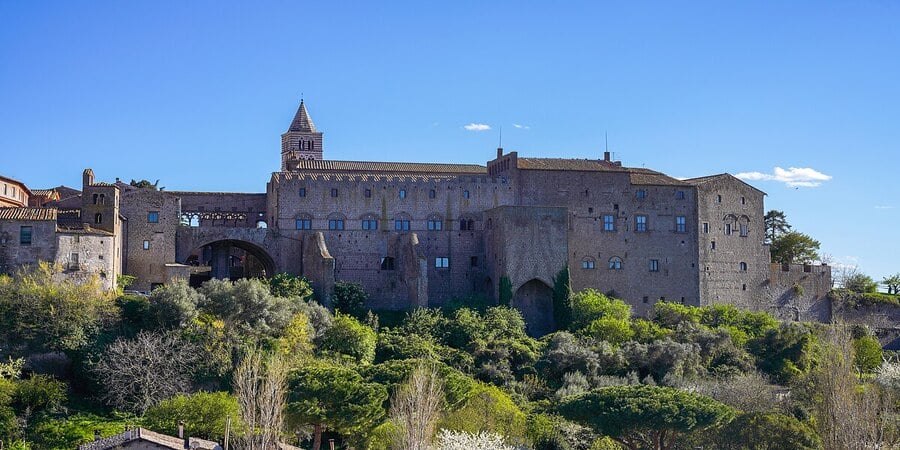
Piazza San Lorenzo: The Heart of Viterbo
Adjacent to the Palazzo dei Papi is Piazza San Lorenzo, the heart of Viterbo’s medieval quarter. Here, you’ll find the Cattedrale di San Lorenzo, a Romanesque cathedral dating back to the 12th century. The cathedral’s simple yet elegant design is a tribute to the city’s second patron saint, Saint Lawrence (San Lorenzo).
Inside the cathedral, you can explore centuries-old religious art and architecture. This sacred space provides a serene atmosphere for reflection, making it a must-see for visitors interested in religious history.
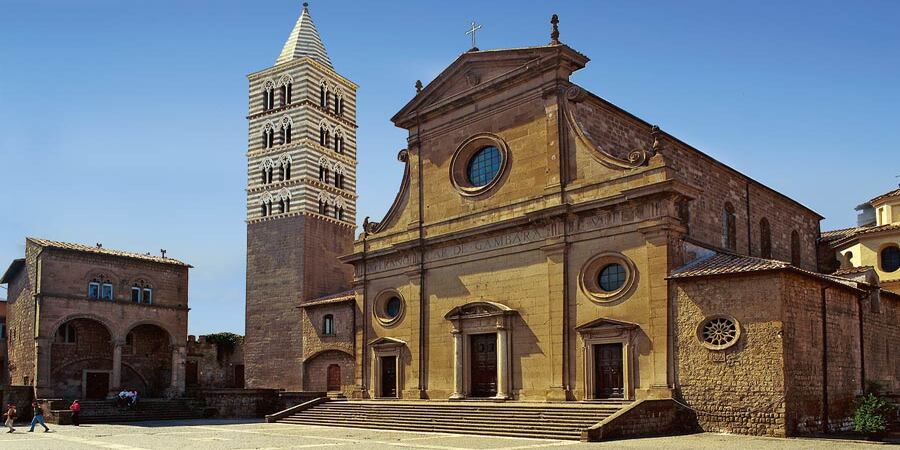
Explore Viterbo’s Romanesque Churches
Viterbo is home to numerous Romanesque churches scattered throughout the medieval quarter. Each of these churches has its own unique history and charm. Some of the most notable include:
- Chiesa di Santa Rosa: This church is dedicated to the city’s patron saint, Saint Rosa. The saint is celebrated annually during the Santa Rosa Festival, a cultural highlight of the city.
- Chiesa di San Sisto: One of Viterbo’s oldest churches, known for its beautiful architecture and historical significance.
- Santa Maria Nuova is another Romanesque treasure that invites visitors to look back in time and admire its ancient beauty.
Many churches once housed pilgrim hospitals, offering rest and care to travellers along the Via Francigena.
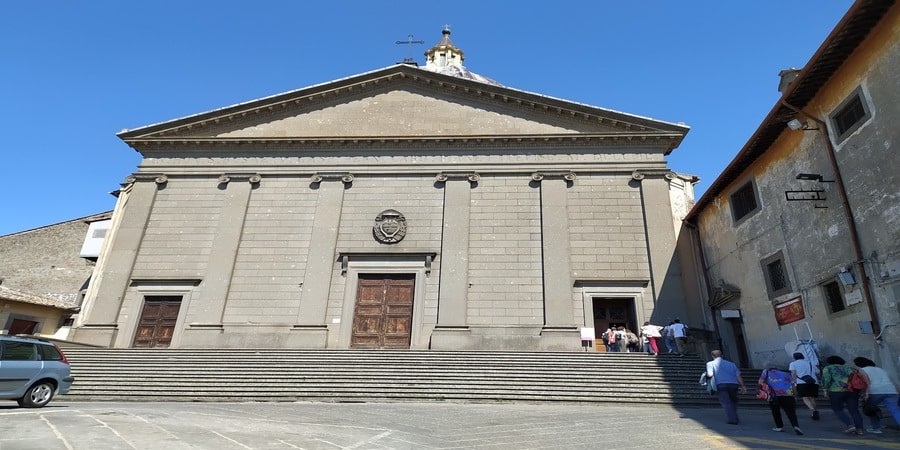
Renaissance Grandeur: Palazzo dei Priori
In addition to its medieval treasures, Viterbo is home to Renaissance architecture, such as the Palazzo dei Priori. This elegant 15th-century palace, located in Piazza del Plebiscito, is worth a visit for its beautiful frescoes and grand halls, which remind visitors of Viterbo’s continued importance during the Renaissance period.
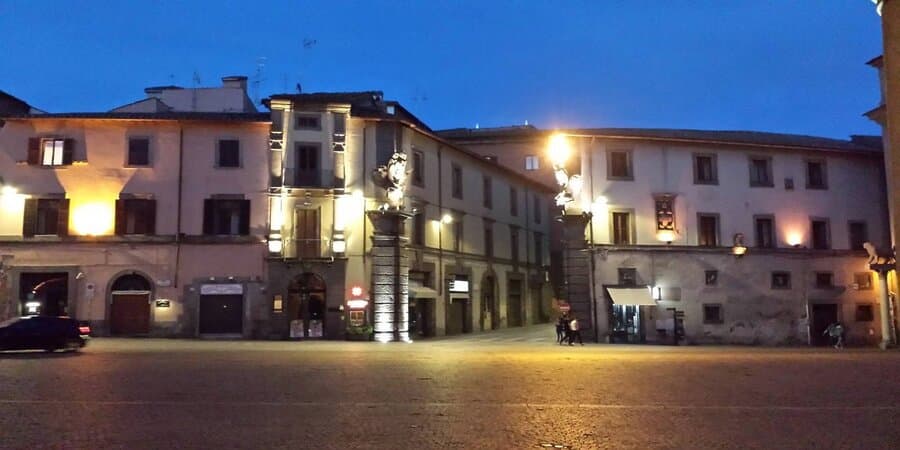
Festivals in Viterbo: A Celebration of History and Culture
Viterbo’s vibrant cultural scene comes alive during its many festivals. Planning your visit around these events will allow you to experience the city’s lively traditions.
Santa Rosa Festival (3rd September)
One of Viterbo’s most famous events is the Santa Rosa Festival, held annually on 3rd September. During this festival, over 100 men carry a large tower dedicated to Saint Rosa through the streets of the old town. Known as the Macchina di Santa Rosa, this tradition dates back to the 13th century and is recognised by UNESCO for its cultural heritage value.
Witnessing the towering structure parade through the narrow streets is a once-in-a-lifetime experience that connects the past with the present.
San Pellegrino Flower Festival (May)
For nature lovers, the San Pellegrino Flower Festival in May transforms the medieval quarter into a colourful garden. The streets of Viterbo burst into bloom with floral displays, making it a magical time to visit. The festival celebrates spring and the beauty of nature, with vibrant arrangements adorning the city’s historic buildings.
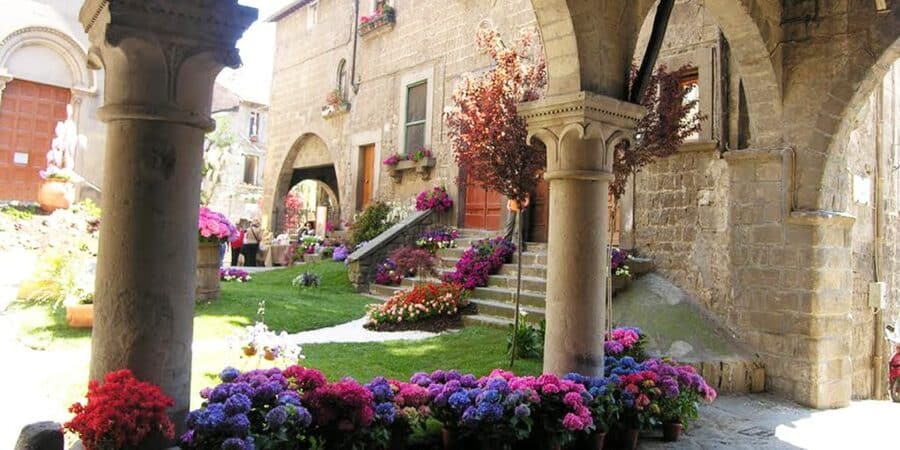
Other Things to Do in Viterbo
Beyond the medieval quarter, Viterbo offers other interesting attractions and activities for visitors:
Thermal Baths
Viterbo is known for its thermal baths, which have been famous since Roman times. Terme dei Papi is one of the most renowned thermal spas in the area. Relaxing in the natural hot springs is the perfect way to unwind after exploring the city.
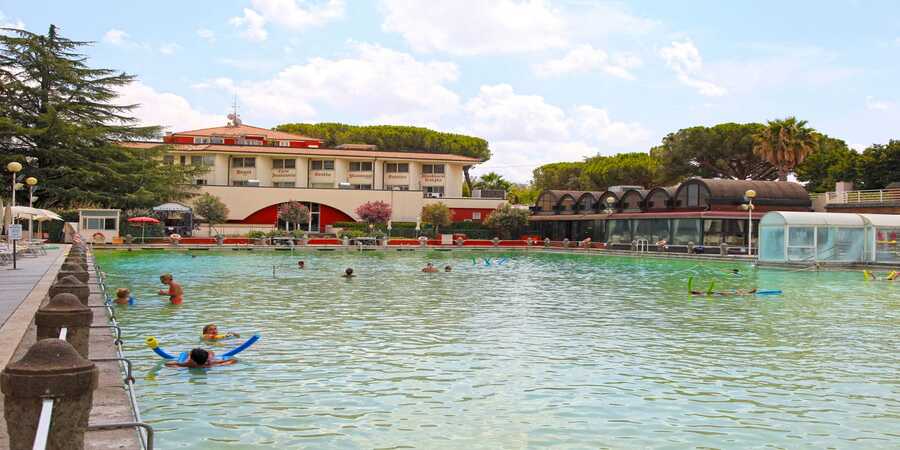
Museo Civico
For history buffs, a visit to the Museo Civico is a must. This museum houses a wide range of artefacts from Viterbo’s long history, including Etruscan, Roman, and medieval collections.
Viterbo Underground
Viterbo also has a hidden side that is waiting to be explored. The Viterbo Underground offers guided tours through the city’s ancient tunnels, giving you a glimpse into its subterranean history.
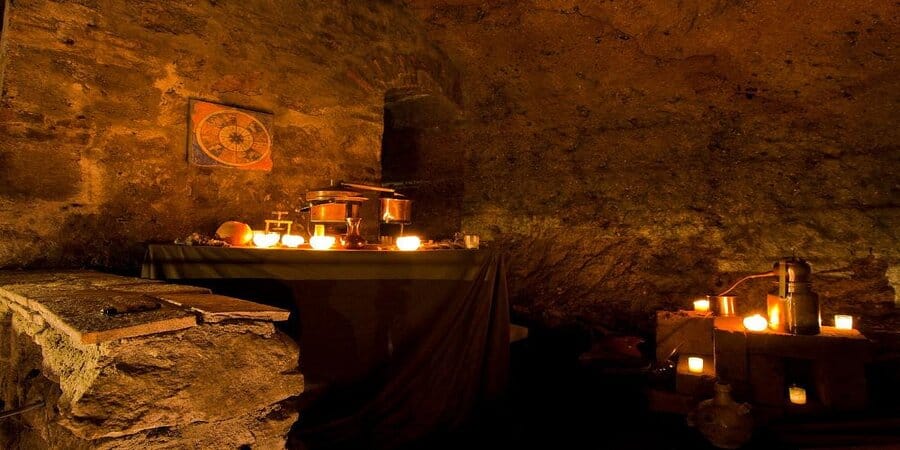
When to Visit Viterbo
The best time to visit Viterbo is during spring and early autumn when the weather is mild and the festivals are in full swing. The Santa Rosa Festival in September and the San Pellegrino Flower Festival in May are trendy times to experience the city’s culture
Viterbo is a hidden gem on the Via Francigena, offering visitors a unique blend of medieval history, Renaissance art, and vibrant cultural traditions. From exploring the charming streets of the San Pellegrino quarter to relaxing in the city’s thermal baths, there is something for everyone in this captivating city.
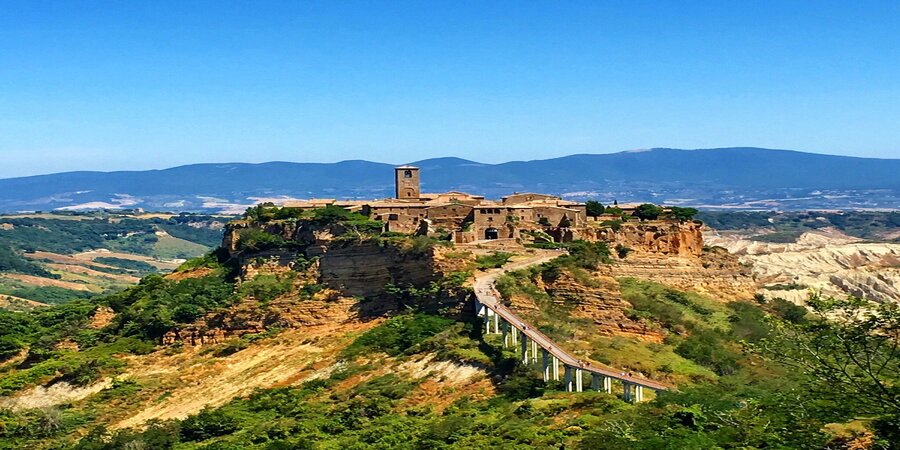
Whether you’re passing through on a pilgrimage or planning a longer stay, Viterbo’s rich heritage and warm atmosphere will leave a lasting impression.
For more information on the Via Francigena or any of the Camino de Santiago routes, contact our travel specialists.
